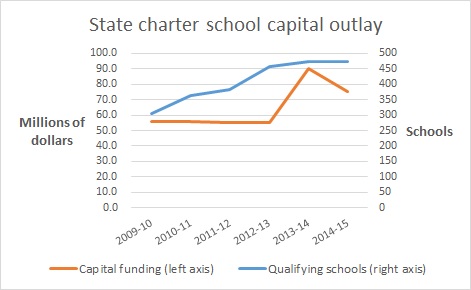There's been a lot of talk recently about the potential impact on school districts' budgets if they are required to share local facilities funding with charter schools. A little-noticed story out of Indian River County might shed some light on the other side of the equation.
The chairman of one of the district's oldest charter schools says he wants to force the district to share local tax collections with his school, according to the Indian River Press-Journal. “We’re tired of being on our hands and knees begging for money,” he tells the paper.
Indian River Charter High School needs building improvements, but declining state funding makes it harder to cover the cost, putting the school in a bind.
Recent elections brought more school choice supporters to the local school board, meaning it's more likely to sympathize with the charter school's plight than some of its counterparts in other districts. According to the paper, board members say they're waiting on the outcome of the upcoming special legislative session on the state budget.
The situation at the 17-year-old charter school is mirrored at others all over the state. More charter schools qualify for state facilities funding each year, but the amount of available money has not kept up.
Total amounts fluctuate each year, but the amount of Charter School Capital Outlay funding per school, and per charter school student, has shrunk over time, as it gets spread among more schools.
Charter schools have to been open three years and avoid failing grades to qualify for the funding. More schools qualify each year, which means the soup has gotten thinner for established schools like the one in Indian River.

Even in recent years, growth in total state capital funding hasn't kept up with the number of schools.
During the 2009-10 school year, 304 charter schools shared about $56 million in state capital outlay funding. Indian River Charter High School received about $467,000. This year, 474 charters are sharing $75 million, and the school is set to receive about $342,000. Other charter schools saw similar declines over the period.
More charters will need to open to meet parents' and students' existing demand for new options. For them to be financially viable, they will need money to help pay for buildings. But finding an agreeable source of money hasn't been easy. Some school districts face a facilities funding squeeze of their own.